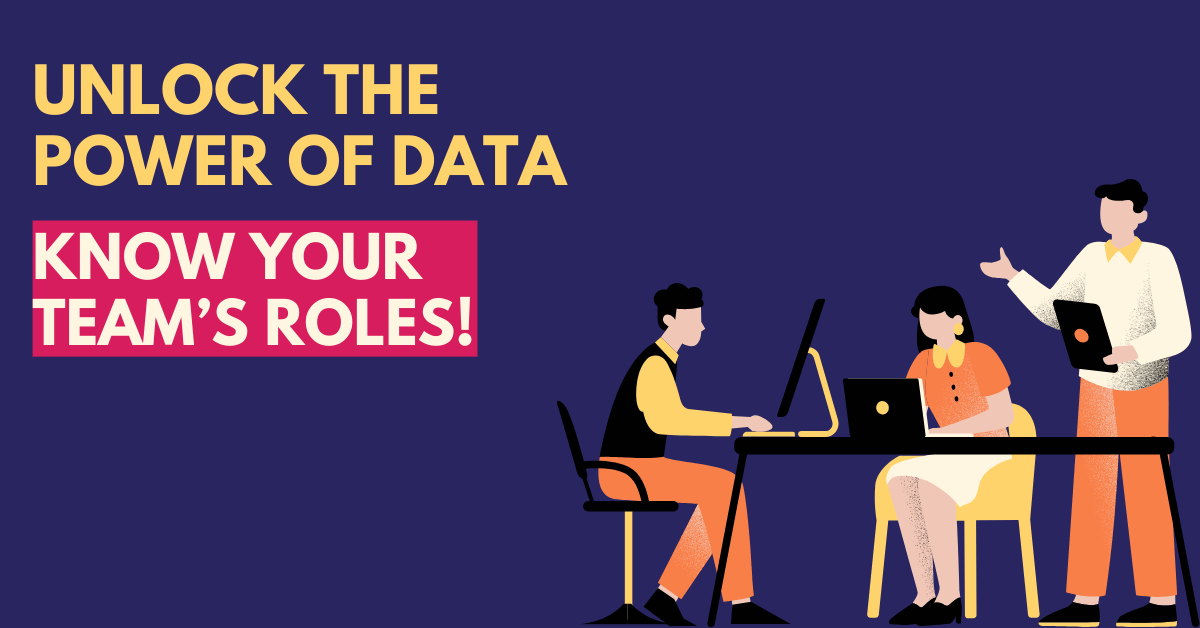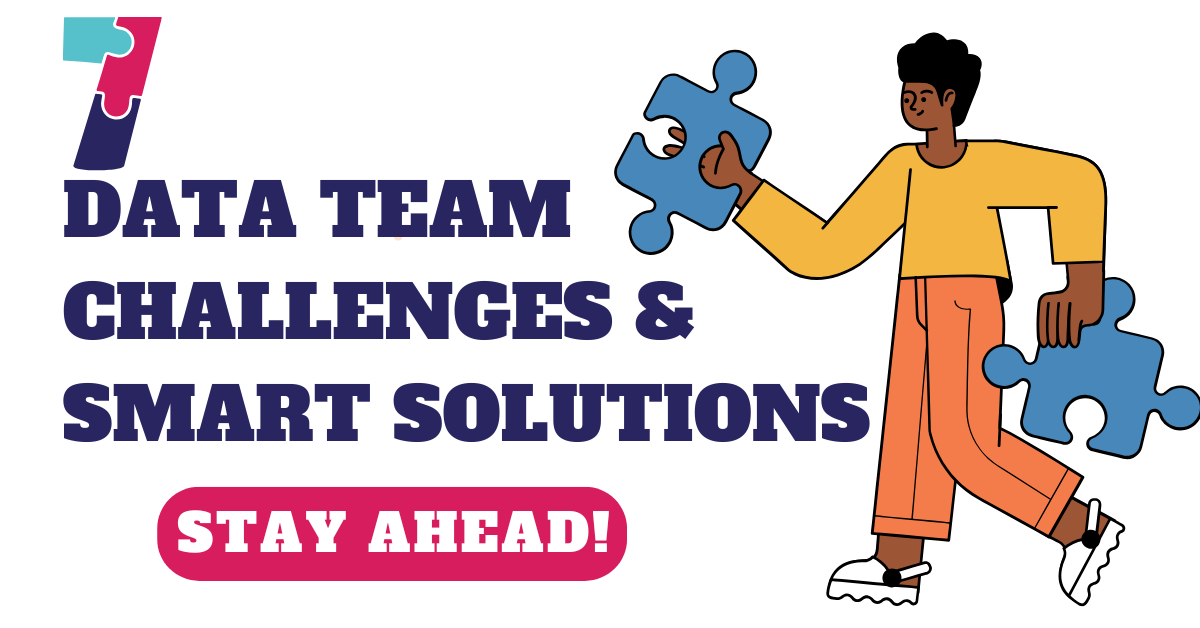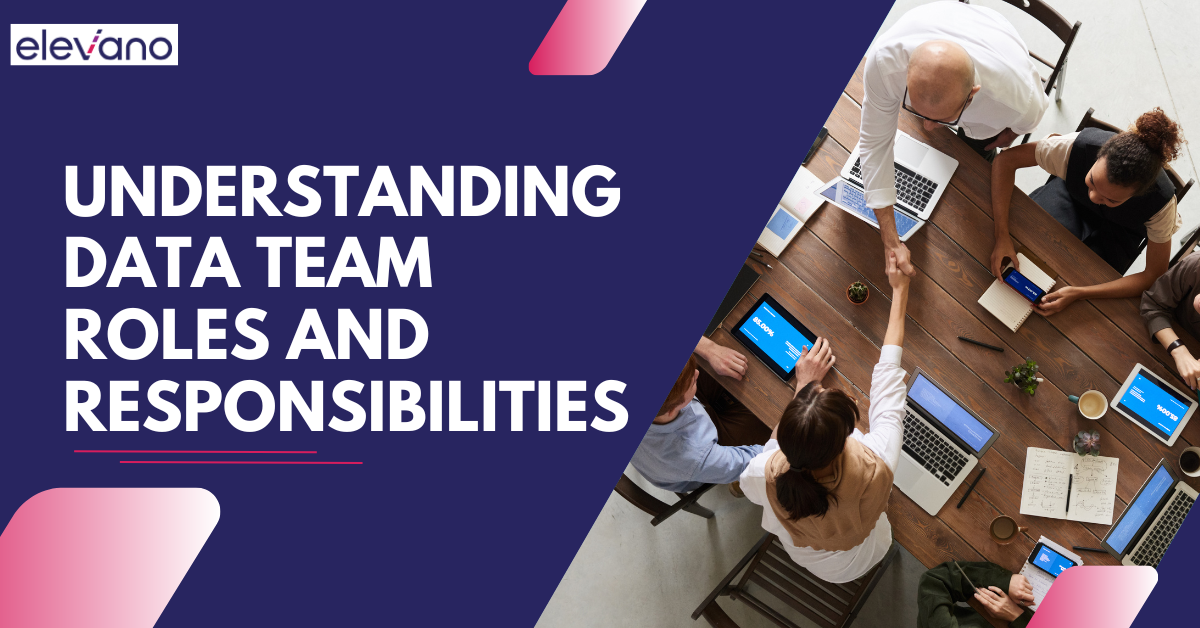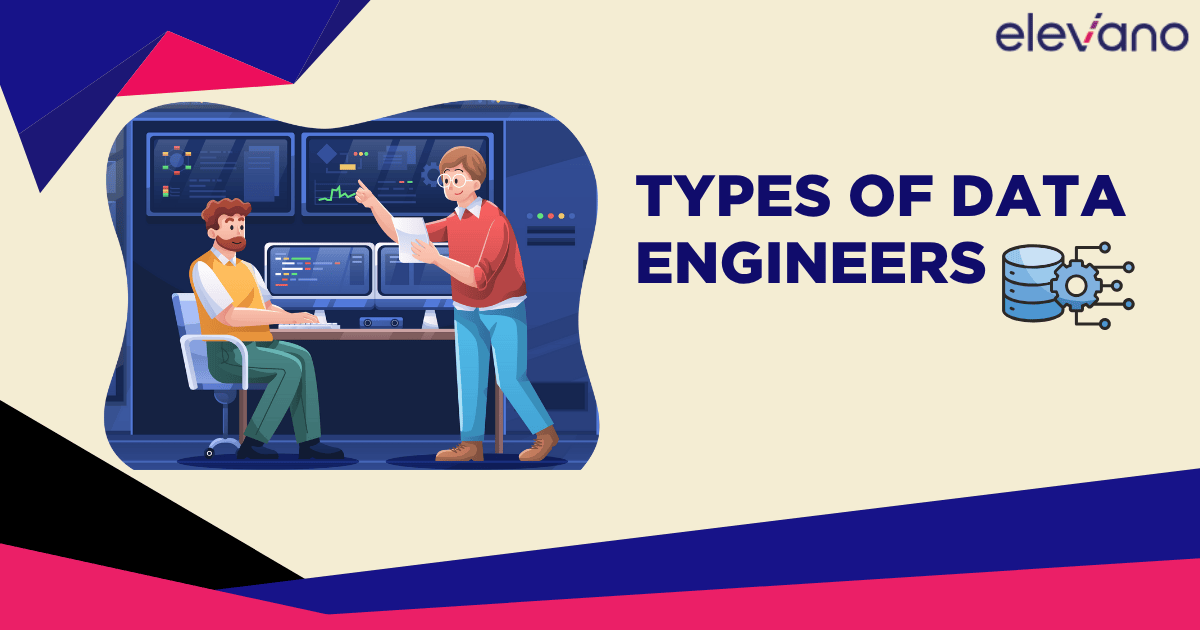In today’s data-driven world, success isn’t just about working harder—it’s about working smarter. Imagine having a team that doesn’t just handle numbers but transforms them into insights that fuel your business decisions. A strong data team doesn’t just crunch numbers; they tell the stories hidden in your data, helping you see the bigger picture and make better choices.
Building a data team isn’t just about hiring experts—it’s about assembling a group of individuals who bring unique skills to the table. From designing seamless systems to delivering insights that shape strategy, every role plays a part in turning raw data into measurable results.
So, what does it take to build a team that thrives on data? Read on to find out.
What Is a Data Team?
Think of a data team as the engine that powers your organization’s decision-making. They’re the bridge between raw information and actionable insights, helping you uncover trends, predict outcomes, and solve problems with confidence. But here’s the thing: a data team isn’t just about analyzing numbers. It’s about creating connections—between systems, departments, and strategies—to ensure every decision supports the bigger picture.

For example, imagine your marketing team wants to understand customer behavior. The data team steps in to collect, process, and present insights that highlight buying patterns and preferences, enabling smarter campaigns. Without a strong data team, decisions are based on guesswork rather than evidence.
Key Roles in a Data Team
(Core Data Roles)
1. Data Analyst: Data Analysts: Translating Numbers into Insights
Ever wonder how businesses turn endless spreadsheets into smart decisions? That’s where Data Analysts shine—they’re the storytellers of the data world, transforming raw numbers into clear, actionable insights.
Picture them as detectives, uncovering patterns and trends from the past to guide the future. Need to know which marketing campaign hit the mark? A Data Analyst connects the dots between clicks, conversions, and demographics to reveal what’s working.
While Data Scientists focus on predicting outcomes and Data Engineers build the data systems, Analysts answer the essential “what” and “why.” Using tools like SQL, Tableau, and Excel, they craft visualizations and dashboards that make even the most complex data easy to understand.
Their true skill lies in making data meaningful. By bridging the gap between raw information and decision-makers, Data Analysts ensure every insight drives smarter, faster business decisions. They don’t just analyze numbers—they tell the story that helps businesses succeed.
Responsibilities of a Data Analyst
- Clean and organize data to ensure accuracy.
- Build dashboards to visualize key metrics.
- Analyze data to uncover patterns and opportunities.
- Provide insights to guide business decisions.
- Work with teams to create customized data solutions.
2. Data Scientist:The Architects of Tomorrow’s Insights
What if you could predict customer behavior or spot opportunities before they arise? That’s the magic of a Data Scientist—a strategist who builds the blueprints for tomorrow’s decisions. Think of them as urban planners for the data landscape, designing systems that transform raw information into foresight.
Using tools like Python and TensorFlow, they uncover patterns, build predictive models, and create strategies that guide businesses into the future. Imagine an e-commerce platform that knows what you’ll want before you do—a Data Scientist’s recommendation engine makes that happen.
Unlike Data Engineers, who are the city’s water system architects, or Analysts, who interpret the flow of information, Data Scientists focus on the “what’s next.” By leveraging machine learning and AI, they turn data into actionable strategies that empower organizations to adapt, grow, and lead.
In short, Data Scientists don’t just work with data—they shape it into a compass for success.
Responsibilities of a Data Scientist
- Build predictive models to forecast trends.
- Analyze data to reveal patterns and insights.
- Work with stakeholders to solve business challenges.
- Present findings through reports and visualizations.
- Optimize machine learning models for accuracy.
3. Data Engineer: The City Planners of Data
Ever wonder how raw data flows seamlessly into the hands of decision-makers? Data Engineers are the city planners of the digital world, designing the pipelines and infrastructure that keep data moving smoothly and efficiently. They ensure the entire system—like a city’s water supply—delivers clean, reliable, and accessible information to the right places.
Picture this: in a retail business, a Data Engineer builds pipelines that connect point-of-sale systems, e-commerce platforms, and customer apps, feeding all this data into a centralized warehouse. This integration allows real-time analysis, helping the business spot trends, respond to customer behavior, and stay ahead in the market.
Data Engineers specialize in ETL (Extract, Transform, Load) processes, enabling data to flow seamlessly through cloud platforms like AWS, Azure, or Google Cloud. Their toolkit includes Python, Scala, and technologies like Apache Spark, ensuring even massive datasets are handled with precision and speed.
While Data Scientists predict trends and Analysts interpret patterns, Data Engineers lay the foundation for it all. Without their expertise, the entire data operation would grind to a halt. They’re the unsung heroes ensuring every system runs reliably, securely, and at scale—empowering businesses to thrive on data-driven decisions.
Responsibilities of a Data Engineer
- Create and manage data pipelines for smooth information flow.
- Design scalable and reliable data storage systems.
- Improve database performance and accessibility.
- Work with analysts and scientists to meet data needs.
- Automate repetitive data processing tasks to improve efficiency.
4. Database Administrator (DBA): The Data Fortress Keeper
Think of a Database Administrator (DBA) as the keeper of a fortress, ensuring that an organization’s most valuable asset—its data—is always secure, accessible, and running smoothly. They maintain the systems that house critical information, protecting it from breaches, system failures, and downtime.
Imagine a high-stakes event like Black Friday, where a surge in customer traffic could overwhelm systems. A DBA ensures databases handle the load seamlessly, safeguarding both revenue and customer experience. They fine-tune performance, minimize downtime, and implement robust backup systems to prevent data loss in case of a failure.
DBAs are masters of database platforms like MySQL, PostgreSQL, and Oracle, and they enforce strict security measures and compliance standards. Unlike Data Engineers, who design data pipelines, or Data Analysts, who extract insights, DBAs focus on ensuring the systems underpinning all data operations remain reliable and efficient.
Their work is the foundation of trust for any data-driven organization. By prioritizing stability, security, and scalability, DBAs empower teams to operate with confidence, knowing their data is always protected and ready for action.
Responsibilities of a Database Administrator
- Optimize database performance to ensure reliability.
- Secure sensitive data against breaches and unauthorized access.
- Maintain backups and recovery systems to prevent data loss.
- Configure databases to meet business requirements.
- Quickly resolve database issues.

5. Data Architect: The Master Planner of Data Systems
A Data Architect is like an urban planner for an organization’s data, designing the master plan that ensures information flows seamlessly and supports both current needs and future innovation. They map out how data is stored, integrated, and accessed, creating a robust foundation that enables efficient operations and strategic growth.
While Data Engineers build the pipelines and Database Administrators ensure systems run smoothly, Data Architects focus on the big picture. They structure the data ecosystem, connecting systems and ensuring everything aligns with business objectives. Their expertise in data modeling, cloud architecture, and database design makes them the strategic visionaries of the data world.
Picture this: a Data Architect develops a cloud-based data warehouse that consolidates information from marketing platforms, customer databases, and operational systems. This central hub enables real-time analytics, giving decision-makers the tools to spot trends, respond to opportunities, and make smarter choices.
By aligning data architecture with organizational goals, Data Architects play a pivotal role in turning data into a true competitive advantage. They’re not just designing systems—they’re shaping the future of how businesses leverage data for success.
Responsibilities of a Data Architect
- Design scalable frameworks for data storage and access.
- Create data models to organize and relate information.
- Align database architecture with business goals.
- Integrate data systems for seamless operations.
- Work with stakeholders to meet current and future needs.
(Specialized Data Roles)
6. Machine Learning Engineer: Turning Models into Real-World Solutions
A Machine Learning Engineer bridges the gap between innovative algorithms and scalable, real-world applications. They transform models designed by Data Scientists into functional systems, ensuring seamless deployment, optimization, and scalability.
For example, in an e-commerce platform, a Machine Learning Engineer might optimize a product recommendation model to deliver accurate, real-time suggestions to millions of users, even during peak shopping periods. Their role ensures that predictive models work efficiently in production environments.
Skilled in programming languages like Python, Java, and C++, and tools such as TensorFlow and PyTorch, they combine software engineering principles with expertise in cloud platforms and big data technologies. Machine Learning Engineers don’t just deploy models—they make them practical, reliable, and impactful, turning innovative ideas into business-ready solutions.
Responsibilities of a Machine Learning Engineer
- Build and deploy machine learning models for practical use.
- Improve algorithms for better performance and scalability.
- Work with Data Scientists to move models into production.
- Track and update models to ensure accuracy over time.
- Create and maintain infrastructure for large-scale ML systems.
7. Business Intelligence (BI) Developer: Bringing Data to Life
A Business Intelligence (BI) Developer turns raw data into clear, actionable insights through dynamic reports and visualizations. They create tools like dashboards and reports that empower teams across the organization to explore data independently, bridging the gap between technical experts and decision-makers.
Skilled in platforms such as Tableau, Power BI, and SQL, BI Developers design solutions tailored to business needs, ensuring that leaders have access to timely, impactful insights. For instance, they might develop a dashboard that tracks key performance indicators (KPIs) like revenue growth or customer acquisition, helping executives spot trends and seize opportunities in real time.
By combining technical expertise with a deep understanding of business priorities, BI Developers ensure data becomes a powerful tool for informed decision-making and strategic growth. Their work enables organizations to transform complex data into decisions that matter.
Responsibilities of a BI Developer
- Create interactive dashboards to showcase business performance.
- Optimize BI tools for fast and accurate data access.
- Work with business teams to understand and meet reporting needs.
- Build and maintain data models for scalable reporting.
- Train users on using and understanding BI tools.
8. Data Product Manager: Aligning Business Goals with Data Solutions
What does it take to turn raw data into business growth? A Data Product Manager is like a bridge architect, connecting business needs with data-driven tools that deliver measurable results. They oversee the lifecycle of data products, ensuring every initiative aligns with strategic goals and delivers value.
For example, a Data Product Manager might lead the development of a customer insights platform, integrating data from marketing, sales, and customer service. This unified view helps businesses improve targeting and enhance user experiences.
What sets them apart is their ability to balance technical expertise with strategic vision. They collaborate across teams, using tools like JIRA, SQL, and Tableau to optimize data solutions that drive impactful outcomes. With a focus on delivering actionable insights, Data Product Managers play a critical role in turning data into success stories.
Responsibilities of a Data Product Manager
- Prioritize data projects to meet business goals.
- Work with technical teams to create tools for actionable insights.
- Manage data products from planning to deployment and optimization.
- Assess the ROI of data projects to ensure they support organizational goals.
- Bridge communication between stakeholders and data teams for alignment.
9. Data Governance Specialist: The Guardian of Data Integrity
What does it take to keep your data safe and reliable? Think of a Data Governance Specialist as a security guard for your data systems, ensuring every piece of information is accurate, secure, and used responsibly.
Their job involves creating policies to protect sensitive information and comply with regulations like GDPR and CCPA. For instance, they might design protocols for managing customer data, using tools like encryption and access controls to keep it secure.
By enforcing standards and conducting regular audits, they ensure data remains trustworthy and ready to support smart decisions. With tools like Collibra and Informatica, Data Governance Specialists build the foundation for a business to confidently rely on its data for growth.
Responsibilities of a Data Governance Specialist
- Create and enforce data governance policies.
- Ensure compliance with data privacy laws like GDPR and CCPA.
- Set up processes for data quality checks.
- Perform audits to minimize data risks.
- Train teams on best practices for data governance.
10. Data Quality Analyst: The Guardian of Reliable Data
What keeps business decisions sharp and data-driven strategies successful? Reliable data—and that’s where a Data Quality Analyst steps in. Think of them as the custodians ensuring every piece of data is clean, accurate, and ready for action.
Their role involves hunting down errors, fixing inconsistencies, and filling gaps in data to maintain trust in the insights it powers. For example, if a sales database has duplicate entries or missing details, a Data Quality Analyst resolves these issues, ensuring performance reports reflect reality.
Armed with tools like Talend and Informatica, they bring precision and problem-solving to every task. By collaborating with other data team members, they uphold high standards, making sure the data is not just usable but a solid foundation for growth.
Responsibilities of a Data Quality Analyst
- Fix errors and gaps in datasets.
- Set up processes to validate data regularly.
- Work with Data Engineers to ensure clean, reliable data.
- Perform audits to maintain data quality.
- Define and enforce data quality standards.
(Strategic Data Leadership)
Chief Data Officer (CDO): The Navigator of Data Strategy
What does it take to turn raw data into a business advantage? The Chief Data Officer (CDO) acts as the captain, steering an organization’s data strategy toward growth, innovation, and smarter decisions.
Imagine a bridge connecting technical experts and business leaders—that’s the CDO’s role. They align data initiatives with organizational goals, ensuring data is secure, compliant, and accessible. For instance, a CDO might implement real-time analytics in supply chain operations, cutting inefficiencies and boosting agility.
Beyond strategy, the CDO builds a data-driven culture, empowering teams to trust and utilize data effectively. Their blend of leadership, technical expertise, and communication ensures that data fuels every level of decision-making and innovation.
Data Strategist: The Architect of Data Value
What does it take to turn data into a powerful business asset? A Data Strategist acts like an architect, designing a blueprint to ensure every data initiative drives growth, efficiency, and innovation.
Instead of collecting data aimlessly, they focus on aligning data practices with business goals. By identifying gaps and introducing solutions like predictive analytics, they help optimize processes, improve ROI, and allocate resources wisely.
Working closely with executives and technical teams, Data Strategists blend business savvy with data expertise. Using tools like Tableau and SQL, they create strategies that deliver measurable outcomes, keeping organizations ahead of the competition.
Their role ensures data isn’t just stored but actively used to fuel smarter decisions and sustained success.
Responsibilities of a Data Strategist
- Develop data strategies that support business goals.
- Spot weaknesses in data practices and suggest improvements.
- Stay updated on trends and recommend innovative tools.
- Work with teams to ensure data projects align with organizational needs.
Trends in Data Team Roles and Technologies
Data teams are constantly evolving to keep up with the demands of modern businesses. Let’s explore the latest trends shaping roles and the technologies driving their efficiency.
1. Emergence of New Roles
As data needs grow, so do the roles within teams. New specialized positions like AI Engineers, Data Ops Specialists, and Data Ethics Officers are becoming essential. These roles focus on implementing AI systems, streamlining data operations, and ensuring ethical data usage, respectively.
These emerging roles ensure that businesses can handle increasingly complex data challenges while maintaining transparency and efficiency.
2. Growing Demand for Hybrid Skills
Modern data roles require a combination of technical expertise and business acumen. For example, Data Product Managers blend data science knowledge with product development skills, while analysts are expected to communicate insights clearly to non-technical stakeholders.
Hybrid skills help bridge the gap between technical teams and business units, improving collaboration and the application of insights.
3. Rise of Automation and AI in Data Workflows
Automation tools are simplifying repetitive tasks like data cleaning and transformation. AI-powered platforms are now assisting teams in everything from data visualization to predictive modeling. Technologies like dbt (data build tool), Alteryx, and AutoML frameworks are leading this transformation. Automation and AI free up time for data professionals to focus on strategic, high-impact work rather than routine tasks.
4. Shift Towards Real-Time Data Processing
Businesses increasingly rely on real-time insights to make decisions. Tools like Apache Kafka and Snowflake support streaming data, enabling teams to deliver actionable insights without delay.
Real-time processing enhances responsiveness, making organizations more agile in addressing opportunities and challenges.
5. Focus on Data Privacy and Ethics
With stricter regulations like GDPR and CCPA, data teams are prioritizing privacy and ethical data usage. Data Governance Specialists and Ethics Officers ensure that data practices align with compliance standards and protect user trust.
Building trust with consumers while avoiding legal risks has become a critical responsibility for data teams.
6. Adoption of Cloud-Native Technologies
Cloud platforms like AWS, Azure, and Google Cloud are becoming indispensable for scalable, secure, and flexible data storage and processing. These platforms support hybrid and remote teams, enhancing collaboration.
Cloud-native solutions empower organizations to handle large-scale data operations without investing in extensive on-premises infrastructure.
7. Emphasis on Cross-Functional Teams
Data teams are increasingly integrated with other departments, forming cross-functional units that align data initiatives with business objectives. For example, marketing, product, and operations teams often collaborate with data professionals to optimize strategies. Cross-functional teams ensure that data initiatives are directly tied to measurable business outcomes.
Staying ahead of these trends ensures your data team remains competitive and ready to tackle future challenges.
Challenges Faced by Data Teams and Quick Solutions
Data teams face unique challenges that can impact their efficiency. Here’s how to address them.

1. Managing Large and Complex Datasets
Challenge:
As data volumes grow exponentially, teams often struggle to handle, process, and analyze vast amounts of information efficiently.
Quick Solution:
Implement scalable data infrastructure using cloud platforms like AWS or Azure, and leverage big data tools such as Hadoop or Apache Spark to process large datasets effectively.
2. Ensuring Data Quality
Challenge:
Inconsistent, incomplete, or inaccurate data can undermine decision-making and reduce trust in analytics.
Quick Solution:
Introduce data validation tools and processes, such as automated quality checks and data profiling tools like Talend or Informatica. Regularly audit and clean datasets to maintain integrity.
3. Siloed Data and Lack of Integration
Challenge:
Data spread across multiple systems can lead to inefficiencies and hinder collaboration.
Quick Solution:
Adopt centralized data warehouses or lakes using tools like Snowflake or Google BigQuery to consolidate data. Encourage cross-departmental data-sharing practices.
4. Bridging the Gap Between Technical and Non-Technical Teams
Challenge:
Misalignment between data teams and business units can result in misunderstood goals and wasted efforts.
Quick Solution:
Foster communication by introducing data translators or liaisons who bridge the gap. Use visualization tools like Tableau or Power BI to make data insights accessible to non-technical stakeholders.
5. Balancing Speed and Accuracy
Challenge:
Pressure to deliver insights quickly can lead to errors or incomplete analysis.
Quick Solution:
Implement automated data pipelines and dashboards for real-time insights while maintaining rigorous quality checks to ensure accuracy.
6. Keeping Up with Rapidly Changing Technology
Challenge:
Evolving tools and technologies can overwhelm teams and lead to inefficiencies if not properly managed.
Quick Solution:
Invest in ongoing training and upskilling for team members. Encourage the use of modern, user-friendly platforms like dbt (data build tool) and Looker to stay current with industry standards.
7. Data Security and Compliance
Challenge:
Increasing regulatory requirements like GDPR and CCPA make data security a top priority for organizations.
Quick Solution:
Establish robust data governance policies and use encryption tools to secure sensitive information. Regularly review compliance measures with tools like Collibra or OneTrust.
Conclusion
Understanding data team roles and responsibilities is key to maximizing the potential of your organization’s data. Each role, from Data Analysts to Data Engineers and beyond, plays a unique and essential part in turning raw data into actionable insights.
By assessing your current team’s structure and aligning it with your business objectives, you can identify gaps, optimize workflows, and unlock new opportunities for growth. Whether you’re building a team from scratch or refining an existing one, strategic enhancements to your data team can transform how your organization leverages data.
Ready to take your data operations to the next level? Start by evaluating your team’s strengths and explore the roles that will elevate your decision-making and performance.




